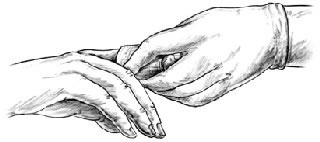Photos

FIRST AID Advice - Bleeding Wound of the Finger
- Apply direct pressure to the entire wound with a sterile gauze dressing or a clean cloth.
- If bleeding does not stop, press on a slightly different spot.
- Once the bleeding has stopped, cover with an adhesive bandage or gauze.
Source: Self Care Decisions, LLC
Used with Permission from Schmitt Pediatric Guidelines LLC.